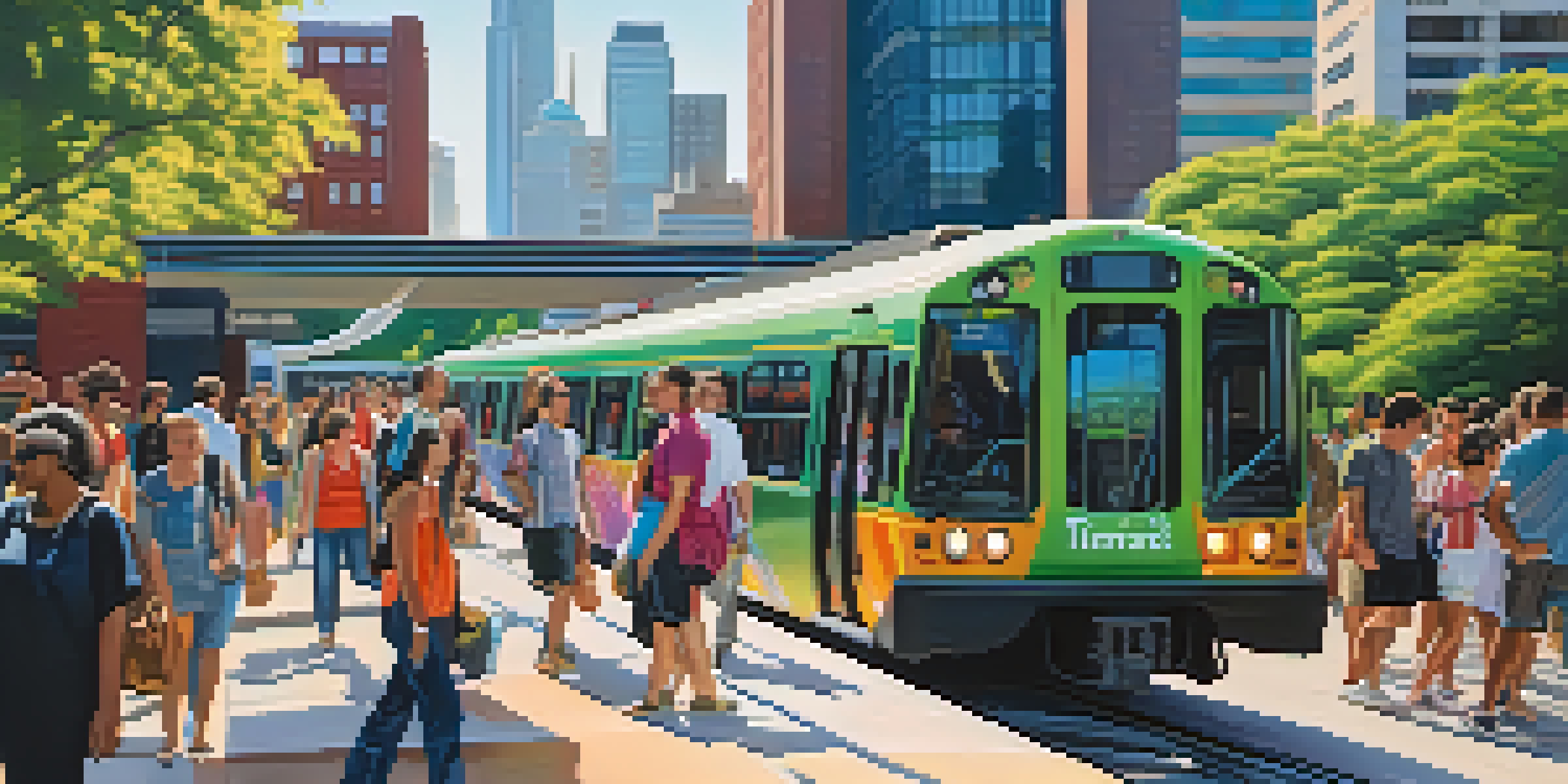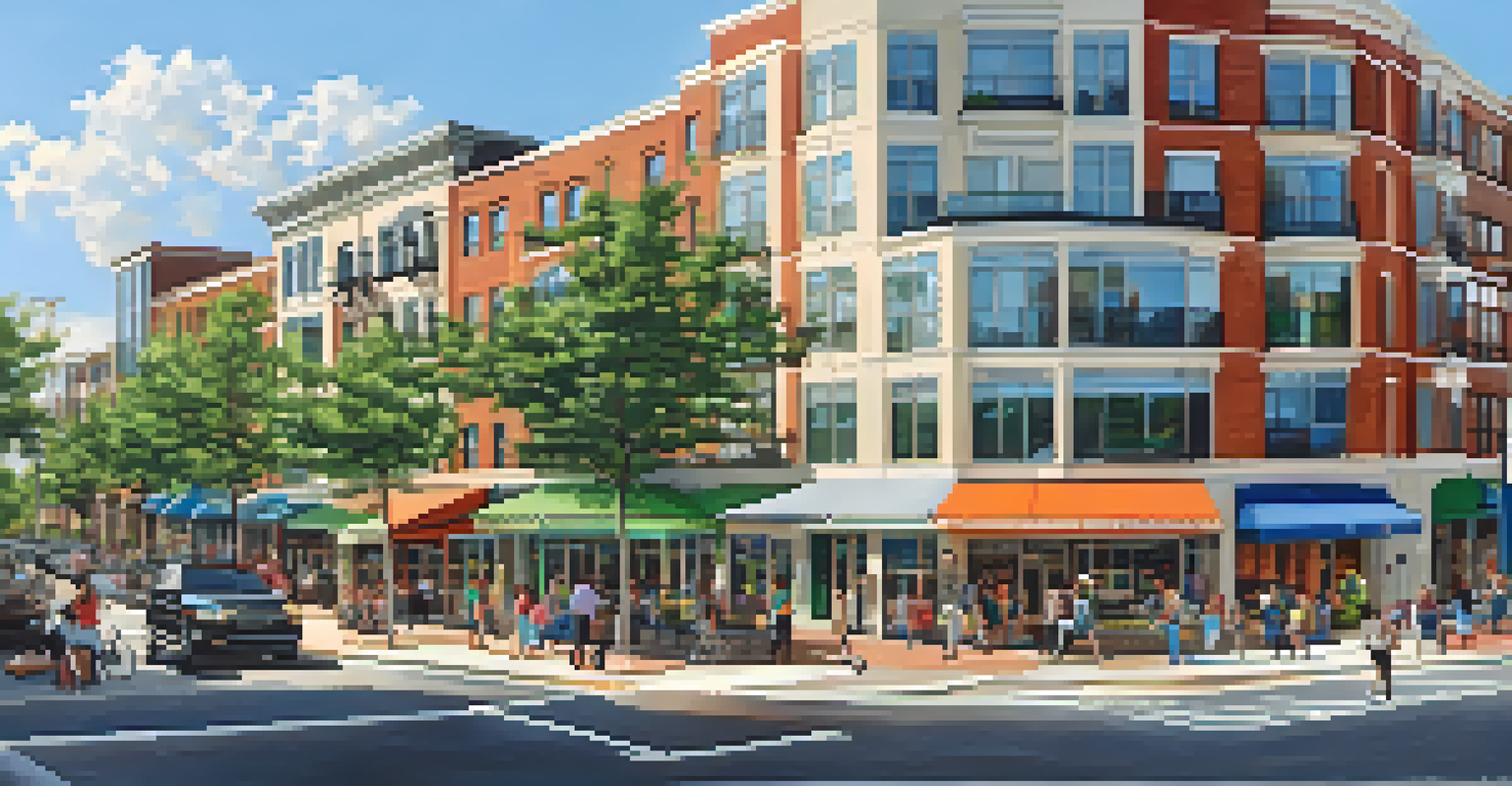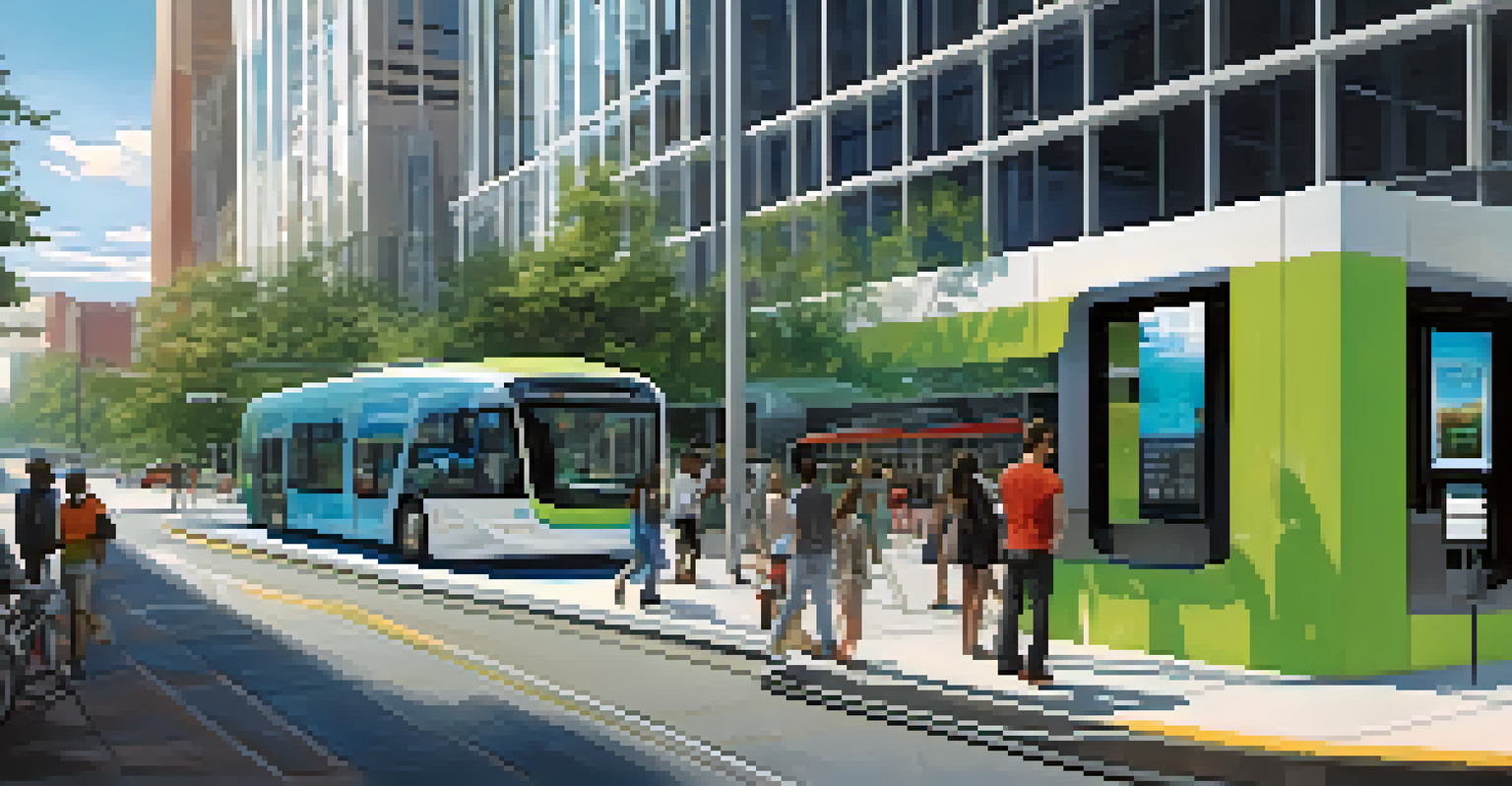How Atlanta's Transit Systems Drive Urban Expansion and Growth

The Role of Public Transit in Atlanta's Urban Landscape
Atlanta's public transit system, primarily operated by MARTA, serves as a backbone for the city's urban structure. By connecting neighborhoods and business districts, MARTA facilitates the movement of commuters and visitors alike. This convenient access encourages population growth in areas surrounding transit stations, creating a vibrant urban environment.
Public transportation is the backbone of urban development, offering a lifeline to communities and a pathway to economic growth.
Public transit not only reduces traffic congestion but also promotes sustainable living by offering an alternative to car dependency. As more people rely on transit, we see a decrease in carbon emissions, contributing to a healthier city. Additionally, the ease of accessing various parts of Atlanta fosters a sense of community and belonging among residents.
Moreover, the expansion of transit routes often leads to increased property values in nearby neighborhoods. Homebuyers and investors are drawn to areas with robust transit options, further driving urban expansion. As a result, Atlanta continues to evolve, blending modern infrastructure with its rich cultural heritage.
Transit-Oriented Development: A Catalyst for Growth
Transit-oriented development (TOD) is a key strategy in Atlanta's urban planning, focusing on creating walkable communities around transit hubs. This approach encourages mixed-use developments that combine residential, commercial, and recreational spaces. As a result, residents enjoy enhanced accessibility to jobs, shops, and leisure activities, all within a short walk or transit ride.

By prioritizing TOD, Atlanta aims to create a more sustainable urban environment that reduces reliance on automobiles. These developments often include green spaces and pedestrian-friendly designs, making neighborhoods more appealing. Communities that embrace TOD are typically more vibrant, attracting businesses and fostering economic growth.
Public Transit Boosts Urban Growth
Atlanta's public transit system enhances connectivity, encourages population growth, and fosters a sense of community.
The success of TOD in Atlanta can be seen in neighborhoods like Midtown and Buckhead, where new developments have transformed the landscape. As more residents move into these areas, the local economy flourishes, creating jobs and boosting the city's overall growth. This symbiotic relationship between transit and development is crucial for Atlanta's future.
Economic Impacts of Atlanta's Transit Systems
The economic benefits of Atlanta's transit systems extend far beyond just transportation; they play a vital role in job creation and business attraction. Companies are increasingly looking to establish their operations near transit hubs, providing employees with convenient commuting options. This trend not only supports local businesses but also enhances the city's economy as a whole.
The future of our cities depends on the choices we make today about transportation, land use, and community engagement.
Furthermore, the presence of efficient transit systems can lead to increased tax revenue for the city. As property values rise in transit-adjacent areas, the local government benefits from higher property taxes. These funds can then be reinvested into public services, infrastructure improvements, and community programs, creating a cycle of growth and prosperity.
The economic ripple effect of transit systems is evident in Atlanta's thriving job market. As new businesses open and existing ones expand, residents have access to more employment opportunities. This boosts the overall quality of life and positions Atlanta as a competitive player in the national economy.
Challenges Facing Atlanta's Transit Systems
Despite the benefits, Atlanta's transit systems face several challenges that can hinder urban growth. One significant issue is the limited coverage and frequency of services in certain areas, which can deter potential riders. To encourage wider usage, improvements in accessibility and service reliability are essential.
Additionally, funding for public transit remains a contentious topic. While there is support for expanding services, securing consistent financial backing poses a challenge. This can lead to delays in implementing necessary upgrades and expansions, impacting the overall effectiveness of the transit network.
Transit-Oriented Development Thrives
The focus on transit-oriented development creates walkable neighborhoods that attract residents and businesses alike.
Lastly, rising population density in urban areas creates pressure on existing transit systems. As more people flock to Atlanta for its opportunities, the infrastructure must adapt to accommodate this growth. Without proactive planning and investment, overcrowding and inefficiencies could undermine the transit systems' potential to drive further urban expansion.
Community Engagement in Transit Planning
Engaging the community in transit planning is crucial for ensuring that the systems meet the needs of all residents. Atlanta has made strides in involving local stakeholders, gathering input through public meetings and surveys. This collaborative approach helps identify areas for improvement and ensures that transit developments reflect the community's desires.
Moreover, community engagement fosters a sense of ownership and responsibility among residents. When individuals feel their voices are heard, they are more likely to advocate for and utilize public transit. This grassroots support can be instrumental in pushing for funding and resources needed to enhance the transit network.
By prioritizing community input, Atlanta's transit planning can lead to more effective solutions that cater to diverse populations. As the city continues to grow, maintaining this dialogue will be vital in creating a transit system that is inclusive and beneficial for everyone.
Innovations Shaping Atlanta's Future Transit Systems
Innovation plays a pivotal role in shaping the future of Atlanta's transit systems, with new technologies enhancing efficiency and user experience. For instance, the integration of real-time tracking apps allows commuters to plan their journeys more effectively. This technology reduces wait times and makes public transit a more attractive option for daily travel.
Additionally, Atlanta is exploring alternative transit solutions, such as electric buses and bike-sharing programs. These initiatives aim to reduce the carbon footprint of the transit system while offering more options for commuters. As cities around the world embrace sustainable practices, Atlanta is positioning itself as a forward-thinking urban center.
Economic Benefits of Transit Systems
Efficient transit systems contribute to job creation, increased property values, and higher tax revenues for Atlanta.
Investments in smart infrastructure, like automated ticketing systems and improved signage, are also on the rise. These innovations not only streamline the transit experience but also help attract tech-savvy residents. As Atlanta continues to evolve, embracing innovation will be key to maintaining its status as a dynamic city.
The Future of Atlanta's Urban Growth and Transit Integration
Looking ahead, the integration of transit systems with urban planning will be crucial for Atlanta's continued growth. As the city expands, ensuring that new developments are aligned with transit accessibility will help maintain a well-connected urban environment. This holistic approach fosters efficient land use and supports sustainable growth.
Furthermore, as more people choose to live in urban areas, investing in robust transit systems will become increasingly important. The challenge will be to adapt to changing demographics and preferences, ensuring that transit options are flexible and responsive. By prioritizing transit integration in urban planning, Atlanta can create a vibrant city that meets the needs of its residents.

Ultimately, the relationship between transit systems and urban growth is symbiotic. As Atlanta invests in its transit infrastructure, it will continue to attract new residents, businesses, and opportunities. This cycle of growth not only enhances the city's economy but also enriches the lives of those who call Atlanta home.